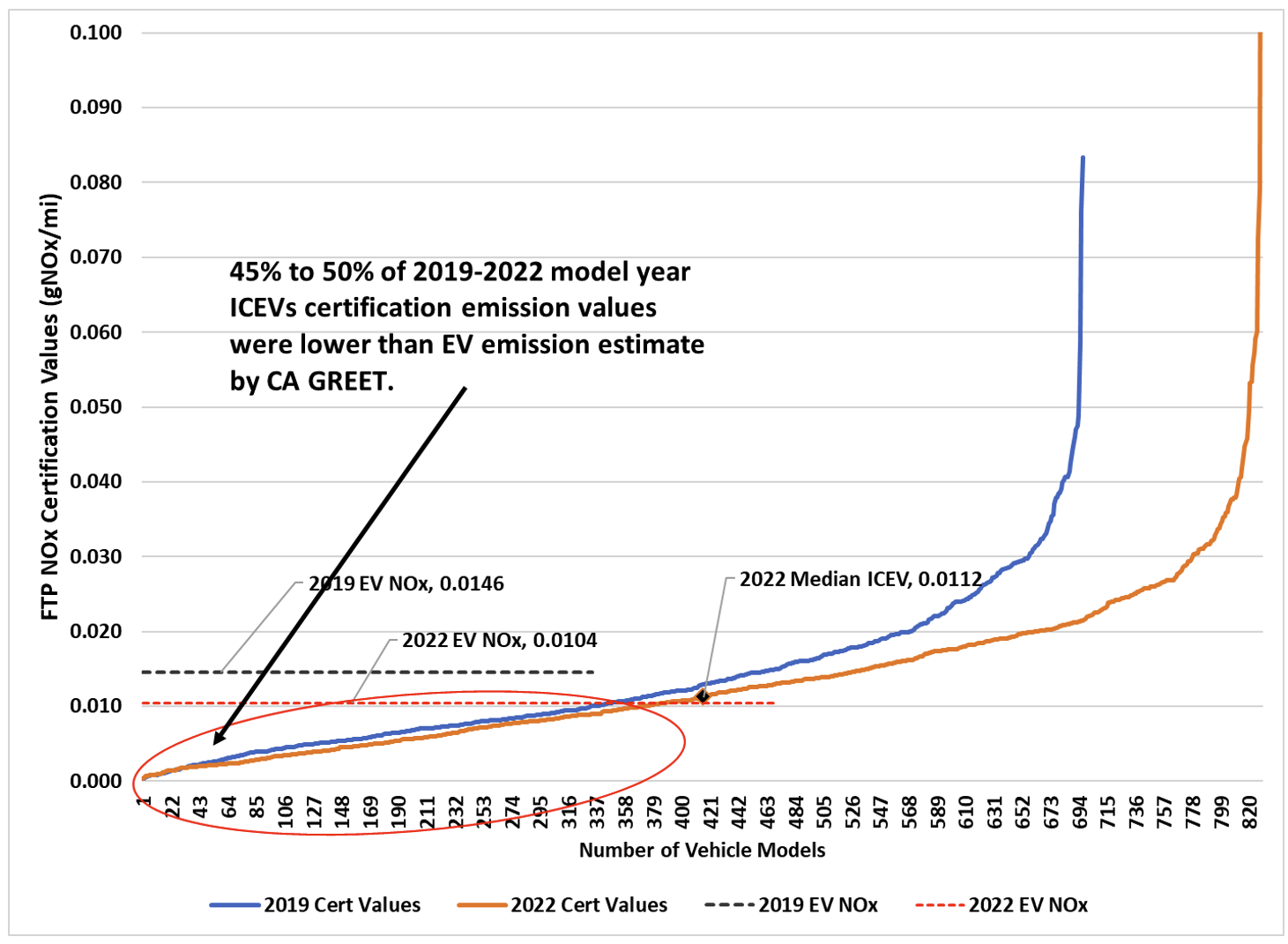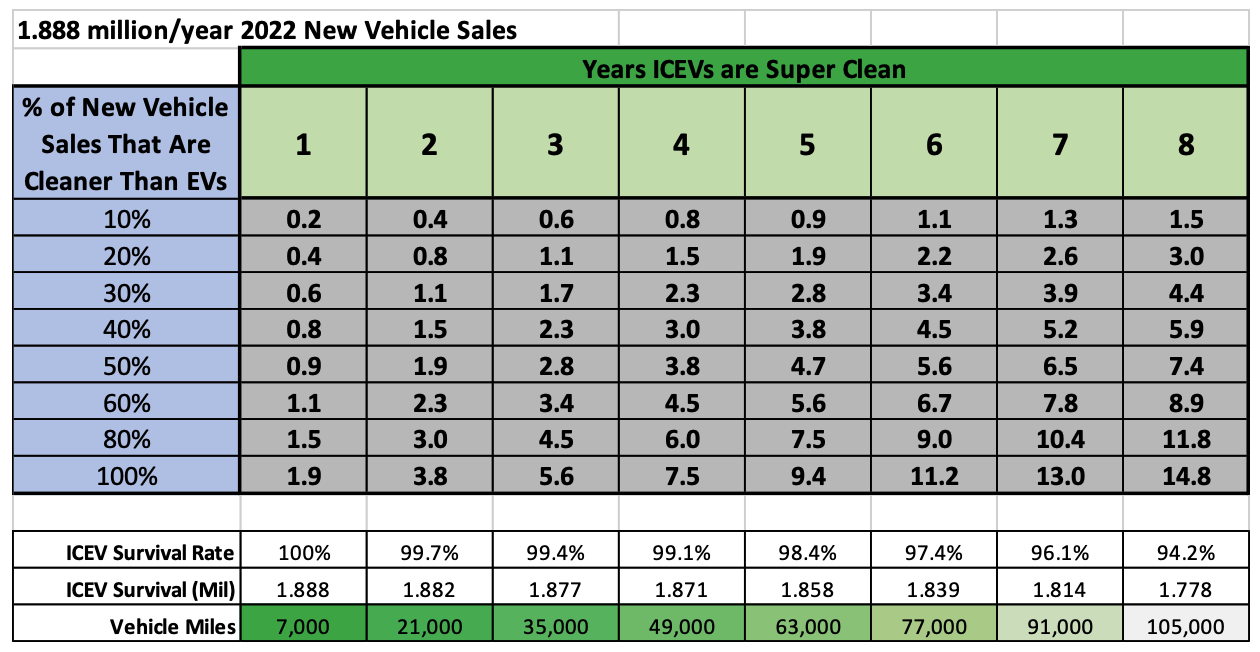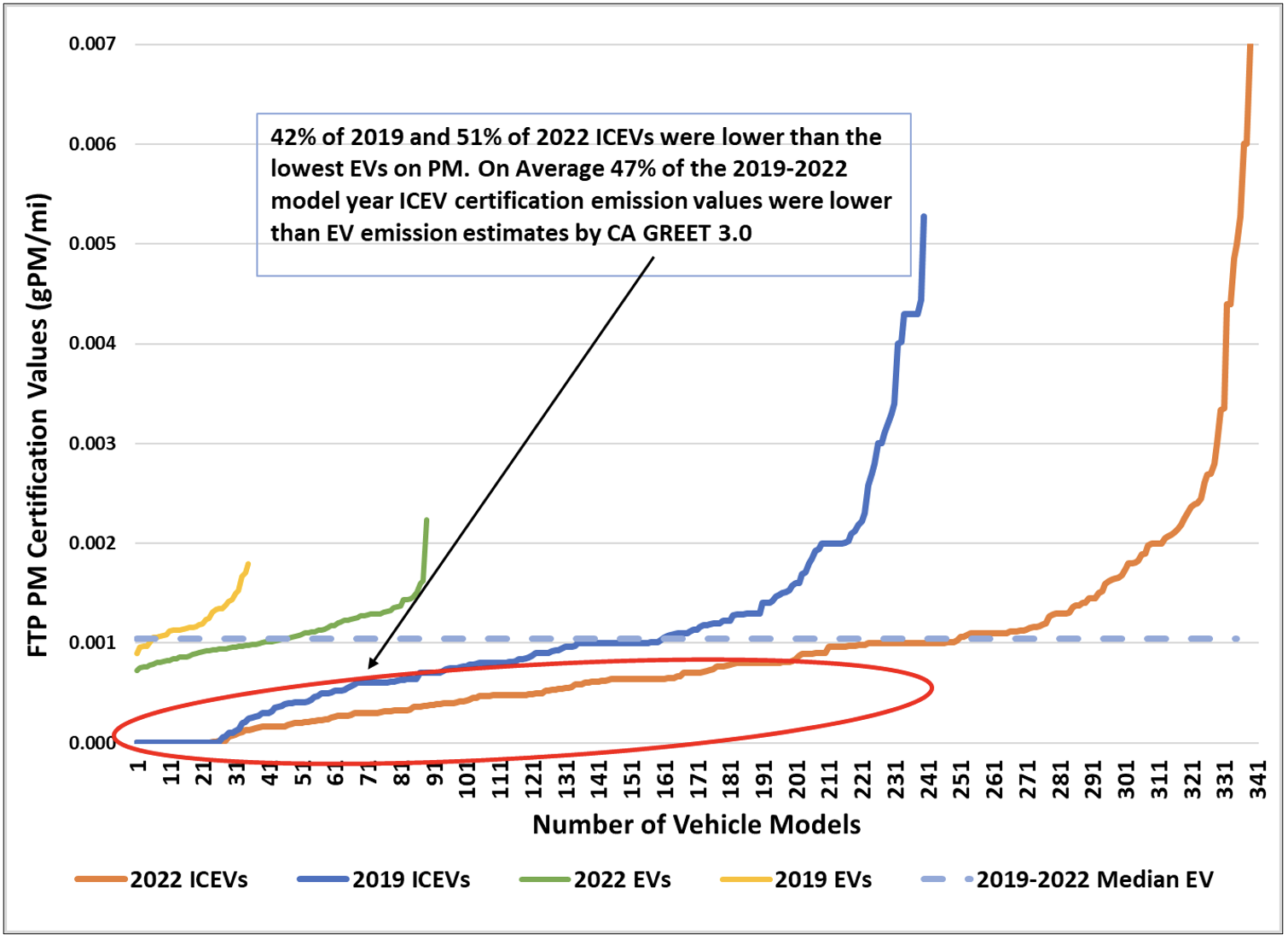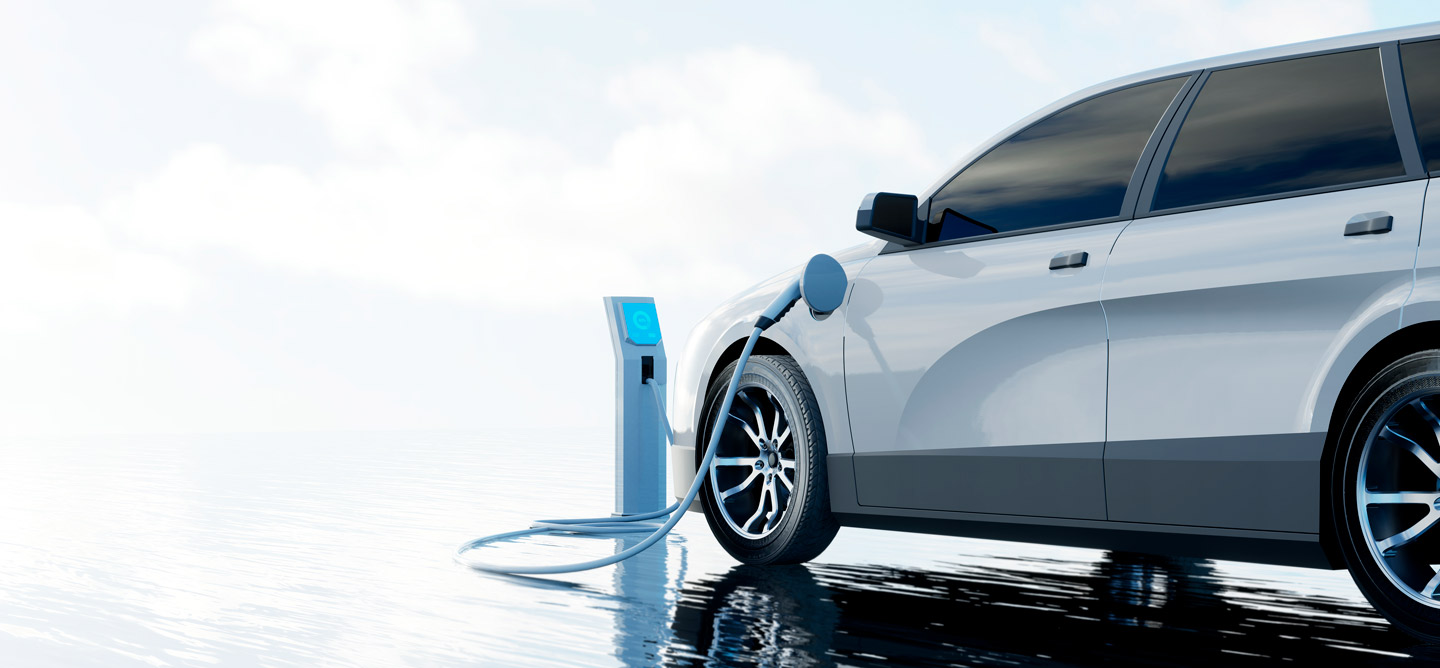Do EVs reduce NOx or PM emissions more than combustion engine vehicles? The answer may surprise you.
Link to article: https://stillwaterassociates.com/do-evs-reduce-nox-or-pm-emissions-more-than-combustion-engine-vehicles-the-answer-may-surprise-you/
October 16, 2023
By Gary Yowell
From the 1990s to the present day, the California Air Resources Board (CARB) and the U.S. Environmental Protection Agency (EPA) have maintained that EVs have lower nitrogen oxide (NOx) and particulate matter (PM) emissions than internal combustion engine vehicles (ICEVs). In fact, California’s State Implementation Plan (SIP) relies heavily on EVs to produce the emission reductions required to meet ambient air quality standards. However, as I will show in this article, EV sales have not yet reduced NOx or PM emissions any more than the cleanest models of ICEV. In fact, EVs are less effective at reducing NOx and PM emissions than ICEVs.
Why is this important? California’s EV mandate is justified only if EVs reduce vehicle criteria pollutant emissions more than is possible with ICEVs.1 Based on CARB and EPA’s calculations, the state’s EV mandates are justified. Using the data and logic we lay out below, however, EVs did not offer greater NOx or PM reductions than the cleanest new gasoline ICEVs models.
Let’s do a fact check of CARB’s logic and data since the beginning of the state’s EV mandate
CARB’s Final Statement of Reasons (FSoR) for the 1996 zero-emission vehicle (ZEV) requirement – which is one component of the Low Emission Vehicle (LEV) Program CARB adopted in 1990 – states that the ZEV program is “vital to our efforts to achieve and maintain healthful air quality.” The FSoR further stated that “even at the high end of the range of estimates” the emission associated with power plants which would fuel EVs were “ten times lower than the tailpipe emissions from the lowest emitting vehicle required by ARB in the future under any existing regulation.” (emphasis mine)
In reality, however, many gasoline ICEVs have had lower NOx emissions than EVs from the 1990s through present day. According to California-GREET 2022, EVs have higher NOx levels than the cleanest 2019 and 2022 new vehicle certification emission values. This is because the GREET model accounts for the EV emissions from California electricity generation and transmission. As shown in Figure 1, 45-50% of the ICEVs from 2019 to 2022 have lower NOx levels than the estimated NOx levels of EVs. Referring to Table 1, assuming 40% of the vehicles maintaining low emissions for five years is equivalent to 3.8 million vehicles. On the other hand, the EV population in 2022 is only 1.15 million vehicles. It is noteworthy that the highest NOx emission vehicles shown below, are mostly Lamborghinis, Corvettes, and the Chevy Colorado ZR 4-wheel drive truck.
Figure 1. 2019 & 2022 NOx Certification Emission Values vs EV NOx Estimates Sources: Annual Certification Data for Vehicles, Engines, and Equipment | US EPA and Ca GREET EV Results
Sources: Annual Certification Data for Vehicles, Engines, and Equipment | US EPA and Ca GREET EV Results
Table 1. 2019-2022 New Super Clean ICEV Populations in Constant Replenishment Over Time
 Source: Stillwater analysis of New Vehicle Sales and Survival Rates
Source: Stillwater analysis of New Vehicle Sales and Survival Rates
Particulate Matter
As shown in Figure 2 below, ICEVs have lower PM emissions than EVs in 32% of the 2019-2022 models. Given the share of the vehicle fleet that is made up of ICEVs compared to EVs, this means that there are more ICEVs with low PM emissions than EVs in the current fleet. Based on Table 1, we can estimate that after five years the number of lower PM ICEVs is between 3.8 and 4.7 million while the number of EVs is only 1.15 million.
Figure 2. ICEVs PM Certification Emission Values vs EV Rates

Sources: Annual Certification Data for Vehicles, Engines, and Equipment | US EPA and Ca GREET EV Results
Conclusions
Using a different logic than the one adopted by CARB and EPA shows that EVs do not offer more NOx or PM reductions than new gasoline ICEVs models. Though this conclusion may sound counterintuitive at first glance, because it contradicts common perception, in fact it is reasonable. This is because there have always been new gasoline ICEVs with lower NOx or PM emissions than their EV counterparts, and they have been sold at much higher rates than EVs. Furthermore, in-use vehicle testing confirms that low emission vehicles maintain their extremely low emission rates for several years in service.2 We are not aware of any EV policy analysis that has considered the population of new ICEVs that start out cleaner than EVs and migrate into the fleet in greater numbers than EVs, which sets the threshold when EVs start to reduce NOx and PM emissions to benefit air quality.
The number of new gasoline ICEVs that have lower NOx and PM emissions than EVs can vary from 3.8 to 4.7 million vehicles over this period. We believe further study is needed and would significantly grow the ICEVs population estimates. The assumption error stems from the governmental policy of using average deteriorated lifetime emissions of new vehicles, and average vehicle fleet emissions, instead of comparing the cleanest gasoline vehicle populations at their cleanest emission rates and their replacement with EVs.
The Bottom Line
Under the Clean Air Act, EPA grants CARB authority to mandate EVs in California provided CARB demonstrates EVs have lower criteria emissions than the available (i.e., ICEV) technology. According to California’s SIP, EVs create surplus NOx reductions compared to ICEVs. However, EV technology is certified at emission levels equal to the median gasoline vehicle. As such, EVs do not create any surplus NOx and PM emissions reductions beyond those of the new, cleanest ICEVs until they outnumber the population of those low-emission gasoline vehicles. An analogy would be that you can’t win a race by simply beating the average runners. To win, you must beat the fastest runner.
The Rest of the Story
In this article we have analyzed city driving data for ICEVs and EVs, showing 40% of ICEVs are cleaner than EVs in town. But that’s only part of the story. Highway test results would likely double the fraction of ICEVs that are cleaner than EVs, but that analysis is for another day. If you’re interested in a deeper or broader dive into the data, contact us!
1 Under California’s Clean Air Act authority, CARB can “mandate a (EV) technology,” provided CARB demonstrates EVs have lower criteria emissions than the available (ICEV) technology. CARB demonstrated EVs have lower criteria pollution by comparing EVs to the average ICEVs fleet emissions with other additional increases to account for in-use emission deterioration, tampering and other factors. CARB did not compare EVs emissions to the cleanest gasoline ICEVs.
2 Center for Environmental Research and Technology, Microsoft Word – CMEM_User_Guide_v3.01d.doc (ucr.edu), Measuring and Modeling Emissions from Extremely Low Emitting Vehicles, Matthew Barth, John Collins, George Scora, Nicole Davis, and Joseph Norbeck, August 1, 2005

